
A full tutorial on how to become a Professional Scout in CSGO. From zero to side way jumpscouting!
Settings
Sensitivity: When scouting, speed is the key, that means the higher sensitivity you set, the higher skill level is possible for you. Though, takes a lot of time to get used to high sensitivity.
Relevant information: When being a scout, checking each corner is necessary, and being able to react to any sort of movement or sound is also necessary. Though, when having a high sensitivity, it becomes extremely difficult to use any other gun that doesn’t have a scope, but still.. Possible, and learnable.
Custom zoom sensitivity: Setting a lower zoom sensitivity is necessary, since flicking with high sensitivity to the head is pretty much impossible. If having a sensitivity of 3, zoom sensitivity of 0.75 would be around the sensitivity suitable for flicking. Command: zoom_sensitivity_ratio_mouse (sensitivity)
Recommendations:
- Raw input on.
- Recommended raw input: 1.
- Recommended sensitivity: 2 – 3.5 (600-1800 DPI)
- Recommended zoom sensitivity: 0.5 – 0.9
- Resolution: 4:3 Stretched – 1280×960 or lower.
Keep in mind that these settings are only recommendations. Depends on preference.

Endless Moving
What is Endless moving: Endless Moving is basically moving as much as possible, that is essential to scouting.
- Why: Because scout is a gun with which you can nonstop move, and still, hit the target.
- How does it work: Basically when using the scout, the moment you stop moving, you can shoot with 100 percent accuracy, that gives you a unique advantage against any enemy you’re facing.
- Staying unpredictable: Trying to be as unpredictable as possible is necessary for scouting, try peeking as weird as possible, as if you’re on a 1 versus 1 server.
- Result: That means if you’re moving constantly, and stopping only when to shoot, you basically become an extremely hard-to-hit target.
Micro-Peeking
Micro-Peeking with the scout: Micro-Peeking with the scout is necessary and relevant for the scout, and must be learned at full extent.
- What is a micro-peek: Micro-Peek is taking a glimpse of what’s happening, for less than 1 second, to have an approximate imagine of where the enemy is.
- How to practice micro peeking: The best way to practice micro peeking with the scout is to use a scout in a casual gamemode, and simply try to make your peek as fast as possible, and that you get enough time to remember the enemy’s location. And then, just prefire the enemy.
Relevant information:
- Hitting the head when micro peeking is unnecessary, unless you have the ability.
- The best micro peek would be fast, and only 1, peeking more than 1 time could be fatal – prefires.

Scout Headshotting
Scout Headshotting: Hitting the head with the scout is a NECESSARY step.
- How hard is it to hit a head: Hitting the head with the scout is surprisingly easy, just takes a bit of practice. When obtaining the skills to do it, the scout basically becomes the unnerfed AWP.
- How to hit the head: Using a micro peek to locate the exact location of the enemy is the way, and then prefiring the enemy’s head. Managing to flick to the head is necessary if wanting to reach the next skill level.
- How to practice: Two things to practice – Micro Peeking headshots and basic flick headshots. Micro Peeking headshots – best way would be to practice on casual gamemode.
Flicking headshots: On a custom map with standing bots.

Perfect Situation
Perfect Situation: The Perfect Situation is getting face to face against 1 enemy. And, being scoped in the place where the enemy’s head is going to appear – pre-scope.
- Getting inside the field of view of more than 1 enemy is really risky, and would most likely end with you killing only 1 enemy. Getting in a situation in which you’re having only 1 enemy in your field of view is necessary to get more opportunities of getting frags.
Tip: Keep a close eye on the radar, and retreat whenever you get a frag. Don’t ever jump in a zone that has more than 1 enemy in.
- Pre-Scope: Pre-scoping is basically zooming in the place where the enemy’s head will appear. Make sure you’re zoomed not too far away, and not to close to the wall. If you’re zoomed to far away, you’re giving the enemy the time to hit you, before you hit him. If you’re zoomed to close to the wall, you won’t be able to react fast enough, unless you have the visual ability to react to if hes going to continue moving, or stop moving the moment he sees you. If you do have the visual ability, you can flick to the enemy depending on his actions.
The perfect zoom would be in a place where you’re able to react, and that would not let the enemy hit you first.
Conclusion: Wait until the enemy reaches the climax of your scope, and then shoot his head.
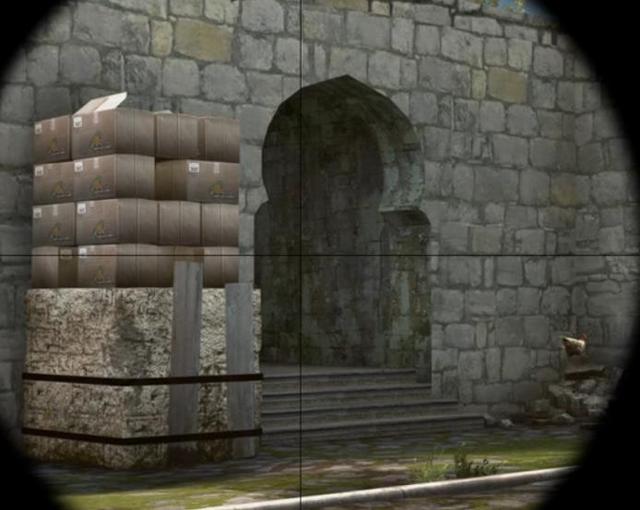
Wallbanging
Scout Wallbangs: Scout wallbanging is basically a micro peek, but instead of peeking for the second time to prefire at the enemy – keep hidden and just shoot through the object.
- What to wallbang: The best objects to wallbang would be anything that is possible to wallbang at close to max capacity. I would recommend testing the things that might be wallbangable at preferred maps.
- Practicing: The best way to practice wallbanging would be offline with bots, setting the time to 60 minutes, stopping the bot movement, and using the bot_place command. Practicing wallbanging is necessary until you can do it each time to the head. Wallbanging to the head is necessary, practice until you can specifically hit the wallbang headshot each time.
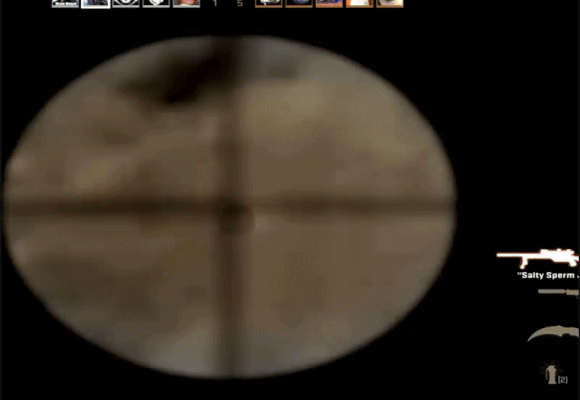
Assumpting
Scout Assumpting: Basically put to your mind that the enemy is going to be in a specific spot, that’s basically a micro peek without a micro peek. (Common spots mostly)
- What exactly is this: Scout assumpting is one of the hardest things, if you’re uncertain that the enemy is going to be in a specific spot, you’re most likely going to hesitate, and end up dying.. Obviously, you can’t know that the enemy is going to be in a spot, that you didn’t check.
- How to hit it: Basically zoom in the spot that might have the enemy’s head in, and shoot before reacting to noticing if, or if not the enemy is there. Basically move while zoomed and shot the moment your scope is at the spot that could have the enemy’s head in.
- Practicing: Practicing the “skill” part of scout assumpting is unnecessary, since this is a really advanced scouting technique, and reaching this stage would require you to have “some” scouting skills. Though, putting the “I’m certain that the enemy is going to be there” without checking the spot could be troublesome.

Jumpscout
Jumpscouting: Jumpscouting is basically jumping and shooting at the enemy in mid air. Common thing before the scout nerf.
- What exactly is it: Jumpscouting is shooting at the enemy in air, when the zoom blur disappears, that’s the timing in which you have to shoot to have 100% accuracy.
- Necessity: Jumpscout really is necessary, it confuses the enemy and makes the enemy pretty much not able to shoot at you, due to being at “WTF” mode. After jumpscouting at a specific person more than 2 times, the person will get used to it, and will most likely be able to counter it.
- How does it work: When jumpscouting you need to memorize the moment you can shoot in, and do it constantly while aiming at the enemy, and not focusing on the possibility that your timing might be off. You can’t really follow two things at the same time, when it basically takes less than a second to happen.
- Practicing: Practicing jumpscout takes a really long time, basically.. Practicing your muscle memory, muscle memory is definitely tricky, and can’t be learned over night. In a custom map with bots, would be the best way to practice it. Until you can jump without focusing on the possibility that your timing might be off, only focusing on your aim.
- Jumpscout flicking: After you can do jumpscouting constantly, you have to practice jumpscout flicks, that’s a lot harder than casually jumpscouting with your zoom on the enemy. Practice until you can do it constantly.
Hitting the head with jumpscouting is extremely tricky, and difficult, that’s why it’s not necessary at first. Would recommend practicing that part after you’re able to flick jumpscout.
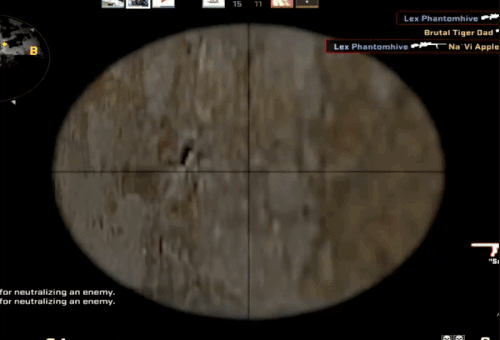
Sideway Jumpscouting
Sideway Jumpscouting: Jumping sideways in mid air with the scout, and shooting with 100% accuracy.
- How hard is it: Sideway jumpscouting after the nerf is semi-impossible, and can be learned only with natural talent, or just with incredibly amount of hours, of practice. Basically, EXTREMELY hard.
- How does it work: Sideway jumpscout is extremely tricky, when jumping sideway while zooming, you need to stop mid air, and the moment you stop, you need to shoot at the enemy. I really would not recommend this unless you practice it until you can hit the head constantly with it. Why? Because after doing the sideway jumpscout, it will take a bit of time to land on the ground, and move back to your hidding spot. If you’re unable to hit the head, and eliminate the enemy in one shoot, then you’re either going to die, or almost die. Though the enemy will be extremely confused, and most likely intimidated.
- How to practice: Practicing this takes a sh!t ton of time, and extreme patience. Would recommend offline with bots, setting the round time to 60 minutes, stopping the bot movement, and then just putting bots to specific places, and just try sideway jumpscouting until you can do it. And then putting bots in different spots, in longer or shorter distances, and just repeating it until you can do it constantly. Though, this can be impossible for some people, be aware.
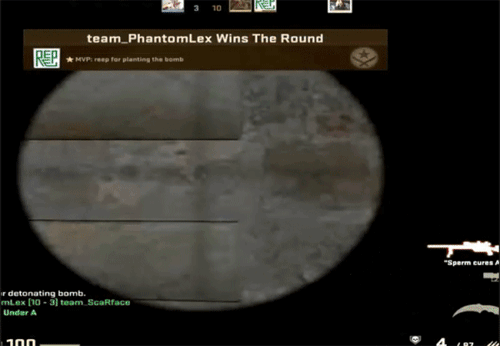



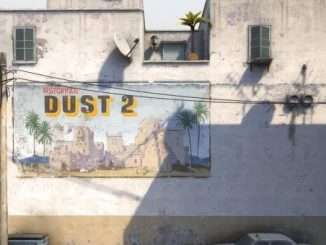

Be the first to comment